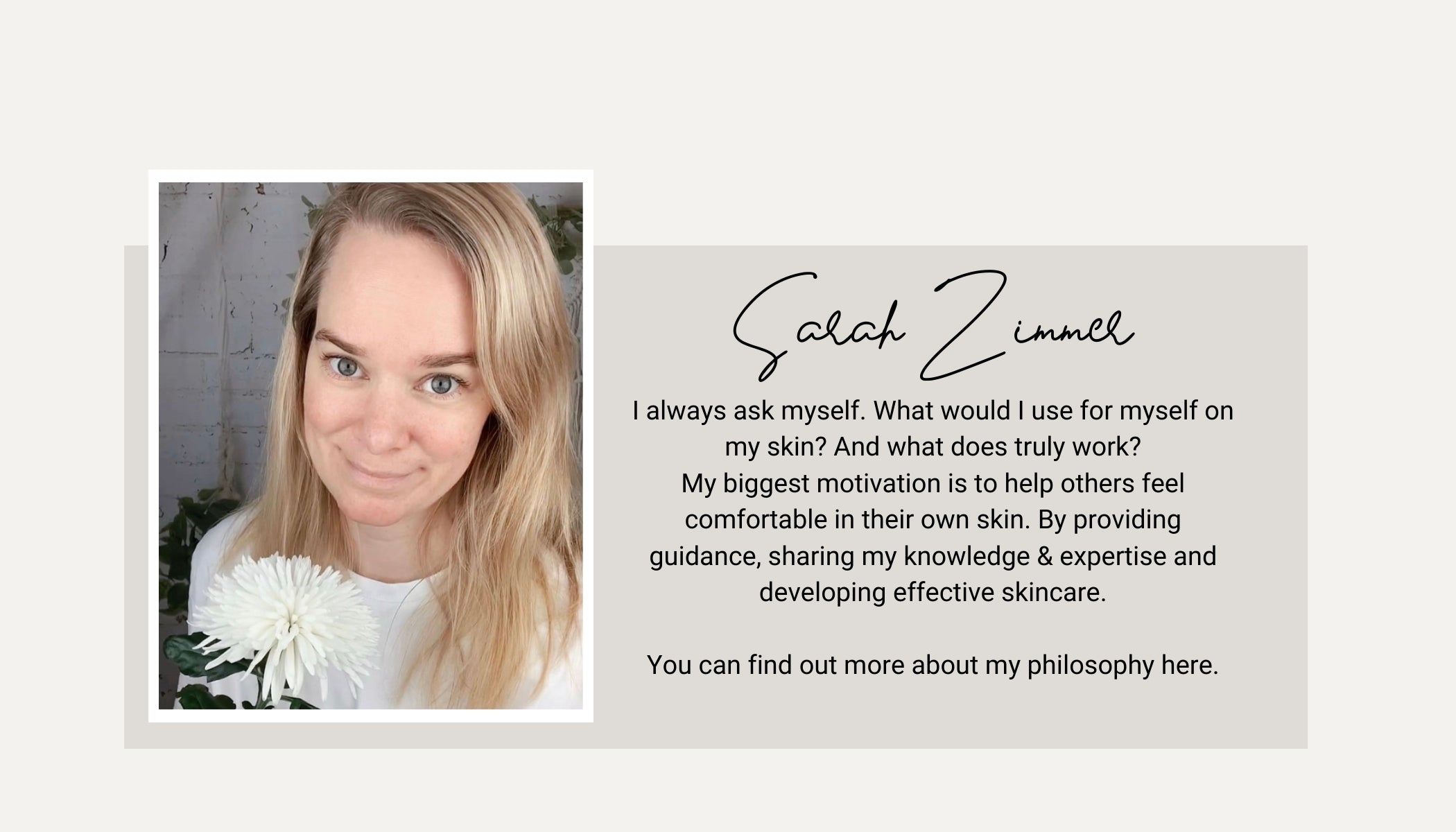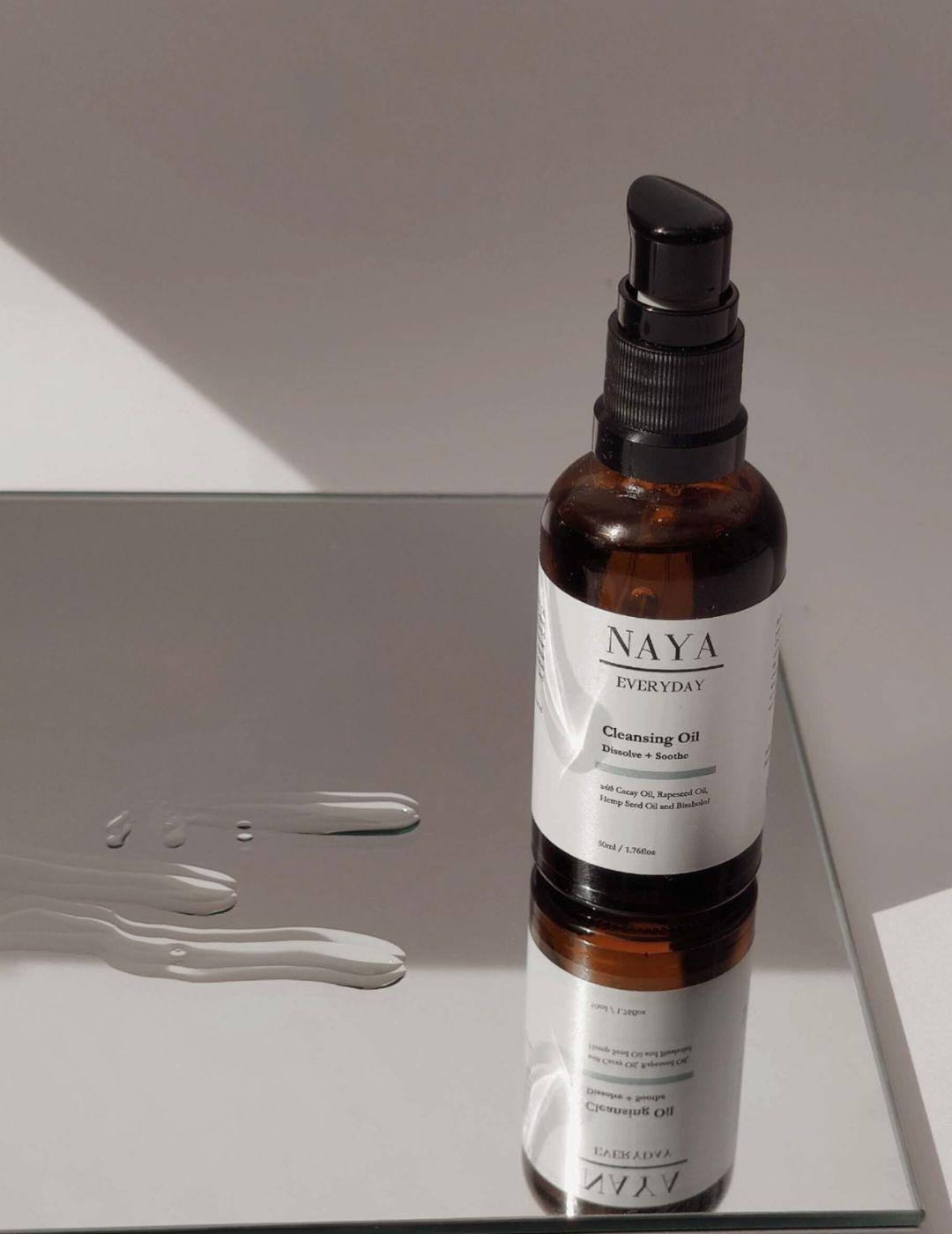Hyaluronic Acid explained
Are you already using Hyaluronic Acid in your Everyday Skincare?
At NAYA, we love using Hyaluronic Acid as it has so many wonderful skin benefits such as improving the collagen production as well making the skin look more plump and fresh with a youthful glow. You can find Hyaluronic Acid in most of our products and we are also pioneering a multi-hyaluronic complex.
What we will be touching on in this article:
What is Hyaluronic Acid
How Hyaluronic Acid works
Why size matters
Most effective Hyaluronic Acid
Hyaluronic Acid & Medicine
The best way to use a Hyaluronic Acid serum
NAYA: Our formulations
What is Hyaluronic Acid
Hyaluronic is a complex ingredient that comes in different forms and sizes. During this article we will outline what the different types are and the different sizes. And why we always recommend to ask the brand what type of Hyaluronic Acid we are using?
How Hyaluronic Acid works
Hyaluronic acid is naturally present in our body and has a molecular weight of 4000 to 8,000,000 daltons. In cosmetics, there are different types of hyaluronic acid that can be used in cosmetic formulations. And they vary based on their molecular size and their effects can vary based on the molecular size that is indicated by its daltons. Hyaluronic is typically labelled as sodium hyaluronate (INCI = Sodium Hyaluronate) and thus doesn’t outline the different molecular sizes that a manufacturer is using. It is at the discretion of the brand to be transparent about the type of sodium hyaluronate it is using. Again, type in relation to the molecular size which has different effects on the skin. If you want to find out which Hyaluronic Acid a brand is using you need to ask the brand about the specifics so you get the result you are looking for.
What makes Hyaluronic Acid so special
Once it sinks into skin, hyaluronic acid can hold up to 1,000 times its weight in water — and in doing so gives skin a soft, plumper texture and more even skin tone. It can improve fine lines and wrinkles as well. On top of that, hyaluronic acid is gentle on the skin barrier, making it a good choice whether you have dry or dehydrated skin.
Why size matters
But not all hyaluronic acid molecules are created equal. In fact, there are six different sizes. Different molecular weights penetrate to different levels of the skin. Molecules with lower molecular weight are smaller, and can therefore reach the deeper layers of skin. There, they sustain skin’s moisture content. Those with high molecular weights, on the other hand, remain closer to the surface, where they can deliver the most visible results with a shorter life-span. As the results will be washed away with the next cleansing ritual.
Roughly, we distinguish between 2 molecular sizes: high molecular weight hyaluronic acid and low molecular weight hyaluronic acid. However, there are more specific ones that you can see below outlined in the table.
Once it sinks into skin, hyaluronic acid can hold up to 1,000 times its weight in water — and in doing so gives skin a soft, plumper texture and more even skin tone. It can improve fine lines and wrinkles as well. On top of that, hyaluronic acid is gentle on the skin barrier, making it a good choice whether you have dry or dehydrated skin.
Below is a table to outline the different molecular sizes Sodium Hyaluronate can represent and its effect:
| Type of Hyaluronic Acid |
Molecular Weight in Daltons |
Use / Effect |
|
High Molecular Weight (HMW-HA) |
>1.800.00 |
|
|
Middle Molecular Weight |
1.000.000 to 1.800.000 |
|
|
Low Molecular Weight (LMW-HA) |
400.000 to 1.000.000 |
|
|
S |
100.000 to 400.000 |
|
|
XS |
<100.000 |
|
So, most brands and the products include a thousand sizes of Hyaluronic acid based on the sizes and the measurement used to measure the different types of hyaluronic acid. :)
Most effective Hyaluronic Acid
High molecular weight
High molecular weight hyaluronic acid is the much larger variant as per outlined in the table above. It consists of molecules of 1,500 kD and larger and cannot penetrate the skin barrier. However, it forms a film with the keratin of the skin on evaporation, which moisturizes the skin and improves its elasticity. Unfortunately, this film is washed off relatively quickly, so that no real long-term effect occurs. Finally, this type has anti-inflammatory properties. So it is quite nurturing and soothing.
Low molecular weight
Low molecular weight hyaluronic acid makes it possible to enter the skin. It consists of molecules of 50 kD and smaller and ensures that water is stored in the connective tissue of the skin. The additional moisture not only makes the skin more firm and firmer, but also visibly reduces wrinkles. When using low molecular weight hyaluronic acid, the moisture is stored in the skin sustainably. Therefore, it has more advantages and above all a more lasting effect.
Clinical studies
Recent independent research have outlined that the hyaluronic you want to use should be between 80,000 to 1,000,000 daltons (80 – 1,000 kDa). See reference to refer to the research. Thus, this seems to be the most effective molecular size that supports the skin to maintain its moisture and elasticity according to studies. Anything higher won’t do much good and has a short-lived effect that is getting removed after you cleanse your face. Anything lower might cause inflammation if used in too high dose as it penetrates deep into your skin. So one needs to carefully formulated with those and leave it to experts with years of experience.
Hyaluronic Acid & Medicine
In medicine, e.g. hyaluronic acid is used as joint injection for lubrication and padding of joints. In many eye drops, it is included as a wetting agent for contact lenses or for the treatment of dry, irritated eyes. In aesthetic surgery, it is also used as a skin filler to make wrinkles disappear for a few months. Hyaluronic acid is certainly an ingredient that is popular in premium products that focus on more mature skin. However, it is never to late to start using hyaluronic acid. In general, formulations do not include more than 2% and is indicated by manufacturer to ensure safe usage. This indication is based on testing and safety assessments conducted by independent parties.
The best way to use a hyaluronic acid serum
Though hyaluronic acid can attract and retain moisture, it doesn’t necessarily keep that moisture from evaporating over time. That’s why it’s important to maximise the benefits by adding an occlusive or emollient ingredient into your routine, like a face oil. It seals in the moisture drawn into skin by the hyaluronic acid, and the two work together to ensure skin is both hydrated and stays that way.To offset this inevitable moisture loss — and therefore minimise dryness, lines and wrinkles, and other signs of ageing — it is important to incorporate it into your daily routine to ensure you can reap all of the benefits.
NAYA: Our formulations
At NAYA, we stick to those guidelines to formulate effective and safe products. So turn the label around and look where you can read the name Sodium Hyaluronate. Some brands typically use a combination of high molecular weight as it demonstrates an immediate effect to convince the buyer of its effectiveness. However, the effectiveness isn’t long lasting if you want to support your skin in the long run. At Naya, we use a low molecular weight to give you lasting effect.
In our new products, we will use a newly researched Hyaluronic Acid which is considered an innovation in the cosmetic industry.








Leave a comment